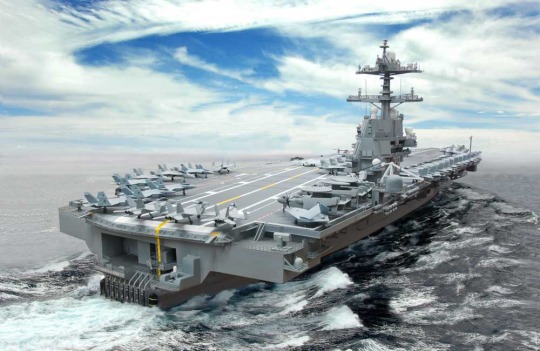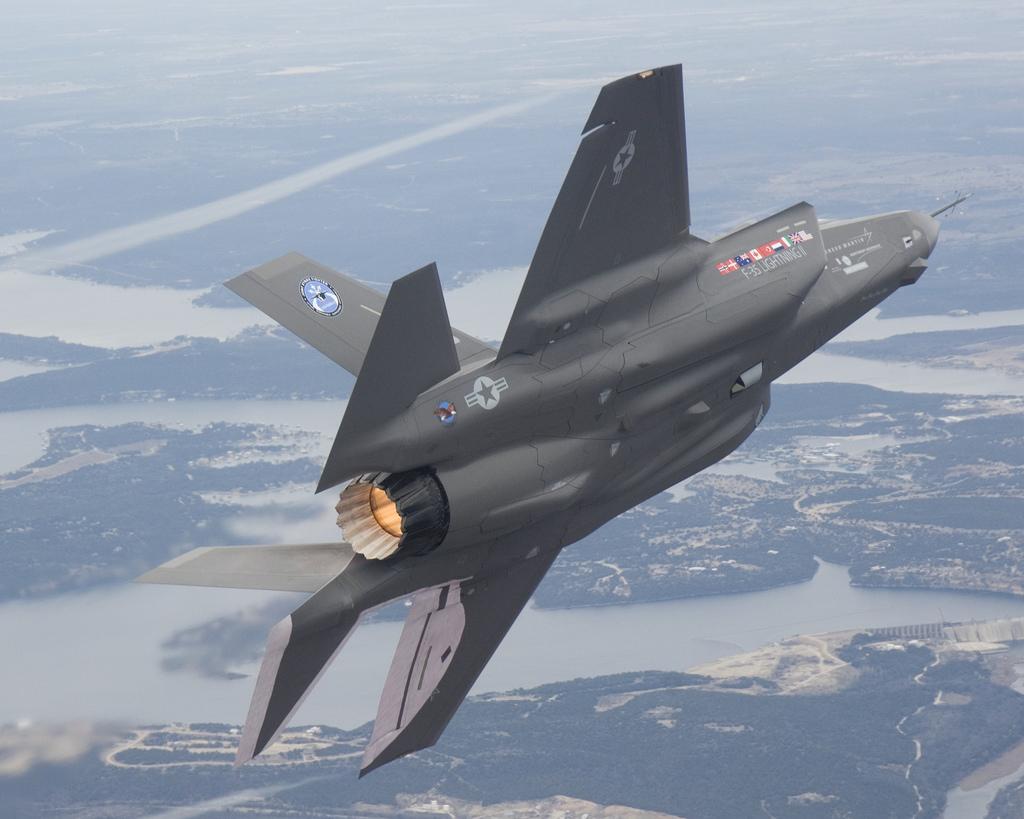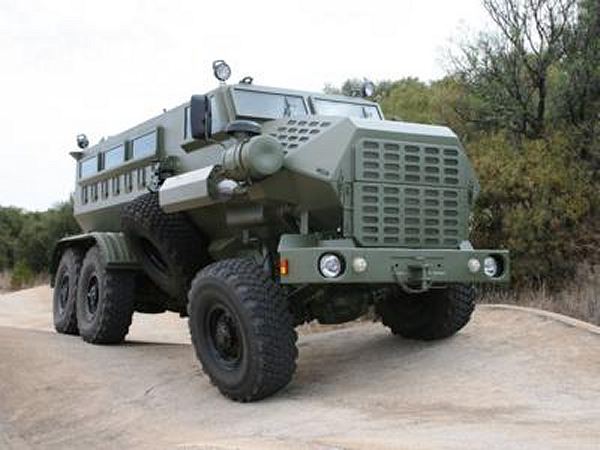Zabaniyah
ELITE MEMBER

- Joined
- Apr 24, 2011
- Messages
- 14,923
- Reaction score
- 7
- Country
- Location
10. P-8A Poseidon

> Type: surveillance/antisubmarine plane
> Total Cost: $33 billion
> R&D: $8.2 billion
> Procurement Cost: $24.2 billion
> Total Units: 122
> Price per Unit: $206.5 million
The Boeing P-8A Poseidon is an ocean patrol and antisubmarine aircraft. While it is combat-equipped, the Poseidons main function will be to patrol the skies with its state-of-the-art sensory equipment. While Boeing (NYSE: BA) used the 737-800 fuselage as a starting point, it made major modifications to turn the airplane into an effective antisubmarine and surveillance vehicle. The company added the wings of the 737-900, which are necessary to support the four AGM-84K standoff missiles on hard points. The planes cargo bay carries Mk 54 torpedoes and mines. The military has ordered 122 of these planes to replace its PC-3 orion fleet.
9. CVN-78 Class

> Type: aircraft carrier
> Total Cost: $34 billion
> R&D: $4.6 billion
> Procurement Cost: $29.3 billion
> Total Units: 3
> Price per Unit: $9.78 billion
The CVN-78 is the first of the Navys next generation of aircraft carrier. It was designed by Northrop Grumman (NYSE: NOC). The government ordered three carriers for delivery over the next 10 years, with the first carrier, the USS Gerald Ford, set to join the fleet in 2015. When completed, at $9.8 billion, it will be the most expensive single piece of military equipment ever assembled. The massive carrier is intended to replace the long-serving USS Enterprise. The new ship will be nearly three football fields long and weigh more than 100,000 tons. The flight deck, which will support more than 75 aircraft, will span an estimated area of 4.5 acres. The massive floating base will also have two cutting-edge nuclear reactors and be equipped with Evolved Sea Sparrow missiles for defense.
8. Joint Mine Resistant Ambush Protected Vehicle

> Type: armored transport vehicle
> Total Cost: $41.6 billion
> R&D: $0.7 billion
> Procurement Cost: $40.9 billion
> Total Units: 26,552
> Price per Unit: $1.6 million
The wars in Iraq and Afghanistan have posed a set of new problems to the U.S. military. The biggest of these was the issue of roadside bombs, or improvised explosive devices, also known as IEDs. The militarys solution to this problem was the Joint Mine Resistant Ambush Protected Vehicle, or MRAP. Development of the MRAP program began in 2006, and now there are more than 26,500 separate units on the Department of Defenses budget. The vehicles are produced by different contractors, and come in different shapes and sizes, depending on their role, but most vehicles have a V-shaped chassis to deflect blasts from under the vehicle, as well as armor and glass capable of withstanding 0.50 caliber rounds.
7. Trident II Missile

> Type: ballistic missile
> Total Cost: $53.2 billion
> R&D: $16.8 billion
> Procurement Cost: $35 billion
> Total Units: 561
> Price per Unit: $65.7 million
Developed by Lockheed Martin (NYSE: LMT), the Trident II is the latest and most advanced version of the U.S. Navys ballistic missiles. Equipped with a thermonuclear warhead, the Trident II is carried by most Ohio-class submarines, as well as some British vessels. The missile is 44 feet long and weighs 80 tons. Equipped with a three-stage rocket, the missile is capable of traveling at more than 13,000 miles per hour, and has a range of 4,600 miles. The Department of Defense currently has 561 Tridents on the budget, each worth more than $65 million, not counting research and development costs.
6. V-22 Osprey


> Type: tiltrotor transport plane
> Total Cost: $57.8 billion
> R&D: $13.6 billion
> Procurement Cost: $43.5 billion
> Total Units: 459
> Price per Unit: $95.2 million
Boeings V-22 Osprey is a prop plane capable of both extremely short takeoffs and landings (STOL) as well as vertical takeoffs and landings (VTOL). The osprey is a tiltrotor aircraft, meaning its two 38-foot blades can tilt upwards and allow the aircraft to take off like a helicopter. The benefit of the V-22 is that once it is airborne and the rotors are tilted forward, it has a much greater range than a helicopter.The Osprey, which serves as a transport, can travel up to 390 nautical miles without refueling at speeds surpassing 260 miles per hour. There are 459 Ospreys currently on the Department of Defenses budget, each costing $95.2 million dollars.
5. F/A-18E/F Super Hornet

(LOL Punkin Dogs... )
)
> Type: fighter jet
> Total Cost: $57.8 billion
> R&D: $7.3 billion
> Procurement Cost: $50.5 billion
> Total Units: 556
> Price per Unit: $90.8 million
The Boeing F/A-18E/F Super Hornet fighter aircraft is a modernized version of the heavily-utilized F/A 18 Hornet. The plane, which comes in a single-seat (E) and two-seat version (F) is primarily used by the Navy and stationed on aircraft carriers. The F/A 18 E/F carries a massive array of weaponry, including a 20 mm gun and eleven separate weapons stations, which can carry air-to-air missiles, air-to-ground missiles, and laser-guided bombs. The Super Hornet is one of the few Navy fighters that will not be phased out by the F-35 joint strike fighter. Each Super Hornet costs the military upwards of $90 million, not counting development costs. The Department of Defense has 556 on its budget.

> Type: surveillance/antisubmarine plane
> Total Cost: $33 billion
> R&D: $8.2 billion
> Procurement Cost: $24.2 billion
> Total Units: 122
> Price per Unit: $206.5 million
The Boeing P-8A Poseidon is an ocean patrol and antisubmarine aircraft. While it is combat-equipped, the Poseidons main function will be to patrol the skies with its state-of-the-art sensory equipment. While Boeing (NYSE: BA) used the 737-800 fuselage as a starting point, it made major modifications to turn the airplane into an effective antisubmarine and surveillance vehicle. The company added the wings of the 737-900, which are necessary to support the four AGM-84K standoff missiles on hard points. The planes cargo bay carries Mk 54 torpedoes and mines. The military has ordered 122 of these planes to replace its PC-3 orion fleet.
9. CVN-78 Class

> Type: aircraft carrier
> Total Cost: $34 billion
> R&D: $4.6 billion
> Procurement Cost: $29.3 billion
> Total Units: 3
> Price per Unit: $9.78 billion
The CVN-78 is the first of the Navys next generation of aircraft carrier. It was designed by Northrop Grumman (NYSE: NOC). The government ordered three carriers for delivery over the next 10 years, with the first carrier, the USS Gerald Ford, set to join the fleet in 2015. When completed, at $9.8 billion, it will be the most expensive single piece of military equipment ever assembled. The massive carrier is intended to replace the long-serving USS Enterprise. The new ship will be nearly three football fields long and weigh more than 100,000 tons. The flight deck, which will support more than 75 aircraft, will span an estimated area of 4.5 acres. The massive floating base will also have two cutting-edge nuclear reactors and be equipped with Evolved Sea Sparrow missiles for defense.
8. Joint Mine Resistant Ambush Protected Vehicle

> Type: armored transport vehicle
> Total Cost: $41.6 billion
> R&D: $0.7 billion
> Procurement Cost: $40.9 billion
> Total Units: 26,552
> Price per Unit: $1.6 million
The wars in Iraq and Afghanistan have posed a set of new problems to the U.S. military. The biggest of these was the issue of roadside bombs, or improvised explosive devices, also known as IEDs. The militarys solution to this problem was the Joint Mine Resistant Ambush Protected Vehicle, or MRAP. Development of the MRAP program began in 2006, and now there are more than 26,500 separate units on the Department of Defenses budget. The vehicles are produced by different contractors, and come in different shapes and sizes, depending on their role, but most vehicles have a V-shaped chassis to deflect blasts from under the vehicle, as well as armor and glass capable of withstanding 0.50 caliber rounds.
7. Trident II Missile

> Type: ballistic missile
> Total Cost: $53.2 billion
> R&D: $16.8 billion
> Procurement Cost: $35 billion
> Total Units: 561
> Price per Unit: $65.7 million
Developed by Lockheed Martin (NYSE: LMT), the Trident II is the latest and most advanced version of the U.S. Navys ballistic missiles. Equipped with a thermonuclear warhead, the Trident II is carried by most Ohio-class submarines, as well as some British vessels. The missile is 44 feet long and weighs 80 tons. Equipped with a three-stage rocket, the missile is capable of traveling at more than 13,000 miles per hour, and has a range of 4,600 miles. The Department of Defense currently has 561 Tridents on the budget, each worth more than $65 million, not counting research and development costs.
6. V-22 Osprey


> Type: tiltrotor transport plane
> Total Cost: $57.8 billion
> R&D: $13.6 billion
> Procurement Cost: $43.5 billion
> Total Units: 459
> Price per Unit: $95.2 million
Boeings V-22 Osprey is a prop plane capable of both extremely short takeoffs and landings (STOL) as well as vertical takeoffs and landings (VTOL). The osprey is a tiltrotor aircraft, meaning its two 38-foot blades can tilt upwards and allow the aircraft to take off like a helicopter. The benefit of the V-22 is that once it is airborne and the rotors are tilted forward, it has a much greater range than a helicopter.The Osprey, which serves as a transport, can travel up to 390 nautical miles without refueling at speeds surpassing 260 miles per hour. There are 459 Ospreys currently on the Department of Defenses budget, each costing $95.2 million dollars.
5. F/A-18E/F Super Hornet

(LOL Punkin Dogs...
 )
)> Type: fighter jet
> Total Cost: $57.8 billion
> R&D: $7.3 billion
> Procurement Cost: $50.5 billion
> Total Units: 556
> Price per Unit: $90.8 million
The Boeing F/A-18E/F Super Hornet fighter aircraft is a modernized version of the heavily-utilized F/A 18 Hornet. The plane, which comes in a single-seat (E) and two-seat version (F) is primarily used by the Navy and stationed on aircraft carriers. The F/A 18 E/F carries a massive array of weaponry, including a 20 mm gun and eleven separate weapons stations, which can carry air-to-air missiles, air-to-ground missiles, and laser-guided bombs. The Super Hornet is one of the few Navy fighters that will not be phased out by the F-35 joint strike fighter. Each Super Hornet costs the military upwards of $90 million, not counting development costs. The Department of Defense has 556 on its budget.
















